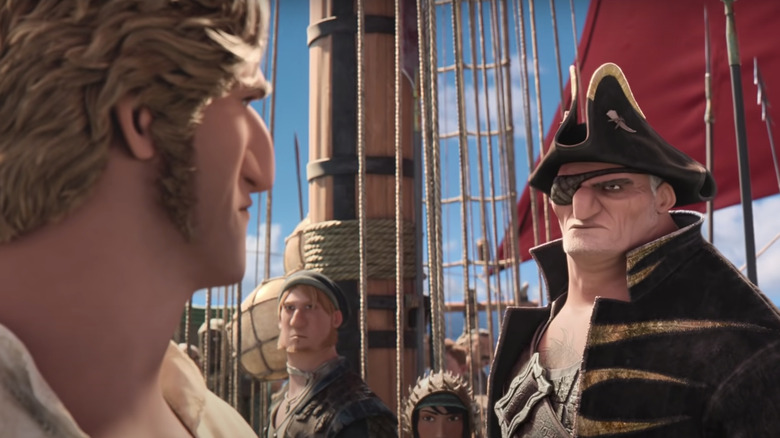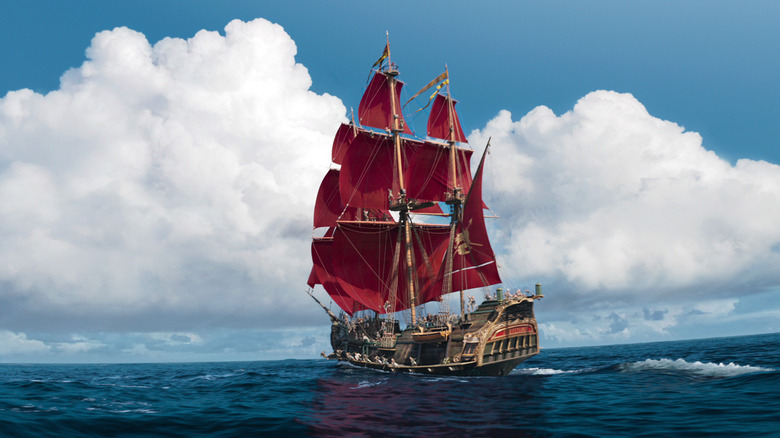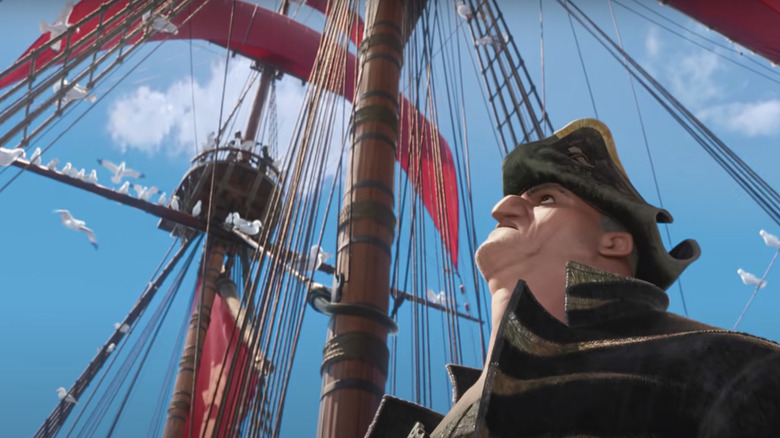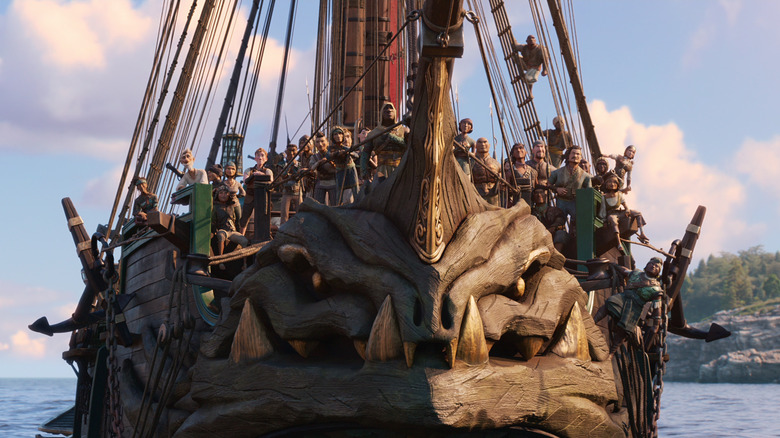Netflix's The Sea Beast Successfully Defeated The Greatest Monster In Animation: Ropes
The medium of animation allows filmmakers to take their creativity to lengths and worlds that don't seem possible within the confines of live-action storytelling. Animated movies have allowed viewers to look inside horrific worlds of stolen identities, colorful nostalgia trips with adorable hormone kaijus, and even the depths of our own personalities. It truly feels like the sky's the limit when it comes to animation, but as technology advances, sometimes those evolutionary achievements actually make things a hell of a lot harder for animators. This was the case on the new Netflix animated feature "The Sea Beast," which pit animators against one of the greatest monsters in the medium: Ropes. Yes, you read that correctly. As it turns out, ropes might as well have been kryptonite for the current state of animation, but the incredible team at Sony Pictures Imageworks broke new ground and animated the impossible.
During a press presentation for the upcoming movie, director Chris Williams said early on, "You're going to hear a lot about ropes today, be warned," knowing that ropes are one of the biggest technical challenges in making an animated movie. If anyone would know that, it's Williams. "My experience on 'Moana' taught me that even a handful of ropes can be a big challenge and our ship had literally hundreds of them, many hundreds of them," he said. "But ... our artists were clearly up to the challenge." The ship of "The Sea Beast" is a nearly screen-accurate recreation of the classic tall ship's vessel design, which requires a ridiculous number of ropes to pull off.
A rope sacrifice to the animation gods
Williams knew he wanted the ship to look as authentic as possible, but early on in the production process, he'd contended with the reality that there were likely going to have to be a lot of ropes sacrificed in order to pull off the look of the ship. Fortunately, the folks at Imageworks were willing to give it a shot and animate the ship with the proper rigging it would need to actually sail. "The Sea Beast" production designer Matthias Lechner said that in order to have a fully functional ship, one of the experts sat in with the modelers when the film was first designed, and "basically made sure that every yardarm, every piece of rope, and the rigging all made sense." VFX supervisor Stirling Duguid said there are at least 5,000 ropes on The Inevitable (that's the name of the ship) — and that's only counting the ropes that are above deck.
"Ropes are hard. Ropes are legitimately hard," said head of character animation Joshua Beveridge. "I honestly always tried to avoid shots with ropes." Animation director Zach Parrish echoed that sentiment, noting that he had worked on "Big Hero 6" and "Moana" with Chris Williams and that ropes "are always just brute force, painful, expensive, and annoying to do." Beveridge said that the amount of complicated rope action in "The Sea Beast" forced the team to approach it all from an entirely different angle.
An unavoidable challenge
According to Duguid, part of what makes animating ropes so difficult is the fact that they're supposed to be somewhat rigid. "I think that's a critical thing is that you have a texture that indicates whether it's taught or whether it's stretching, and ropes don't stretch," he said. "So the hard thing is to create a rig that will take that into account and not stretch." The ropes were unavoidable, and Beveridge admits that after seeing the script, he started panicking. This is a guy who worked on "Spider-Man: Into the Spider-Verse," and helped make multiverses, and ropes were giving him anxiety. "It took a good six, eight months of development to get that to be a system that we could work with in production," said Beveridge. "You can tell when you're cheating," Parrish pointed out, "so any cheats are immediately visible. And then also from a normal rigging standpoint, ropes have to do a million things."
"If you think back and direct your brain through other animated films, you can notice there's not many [ropes] in other films at all because the deal is, it's hard to keep it looking like rope," said Beveridge. "It's a thing we can recognize exactly what it is, but animation — since nothing has real physical properties as it is and the character has to interact with a lot, those two things, it's like putting your hands in and out of your pocket or through your hair." He continued by saying that the difficulty with animating ropes comes down to the complex regions of slack that come and go. "It piles up, it self-collides, it drags against objects around it."
The magic is in simulation
Fortunately for "The Sea Beast," this was something the simulation team felt they could overcome. "For animation, we wanted to design a more stable, fast light measurement tool, and for the simulation team we wanted to better clarify the regions for them to take over," said Beveridge. "So animation still drives the global position and general shape of a rope, as well as the regions where any character is going to be interacting with it deliberately, and then absolutely everything else gets simulated." Zach Parrish praised the Imageworks team for their inventive decision to approach the animation as a measuring tool and letting the slack be simulated as a brilliant solution that provided a realistic result.
"It was incredibly liberating to be able to say, 'What if?' in a scene with a rope where you could just throw an idea out there, and an animator could come up with an idea and do incredibly complex things to build even more realism to the scene," said Parrish. The collaborative nature allowed the team to divide and conquer, and develop rope animation technology that has completely changed the game. By allowing the simulation team to lead the charge, they could finally slay the beast of ropes and no longer see them as a hindrance to creativity.
"The Sea Beast" arrives on Netflix on July 8, 2022.



